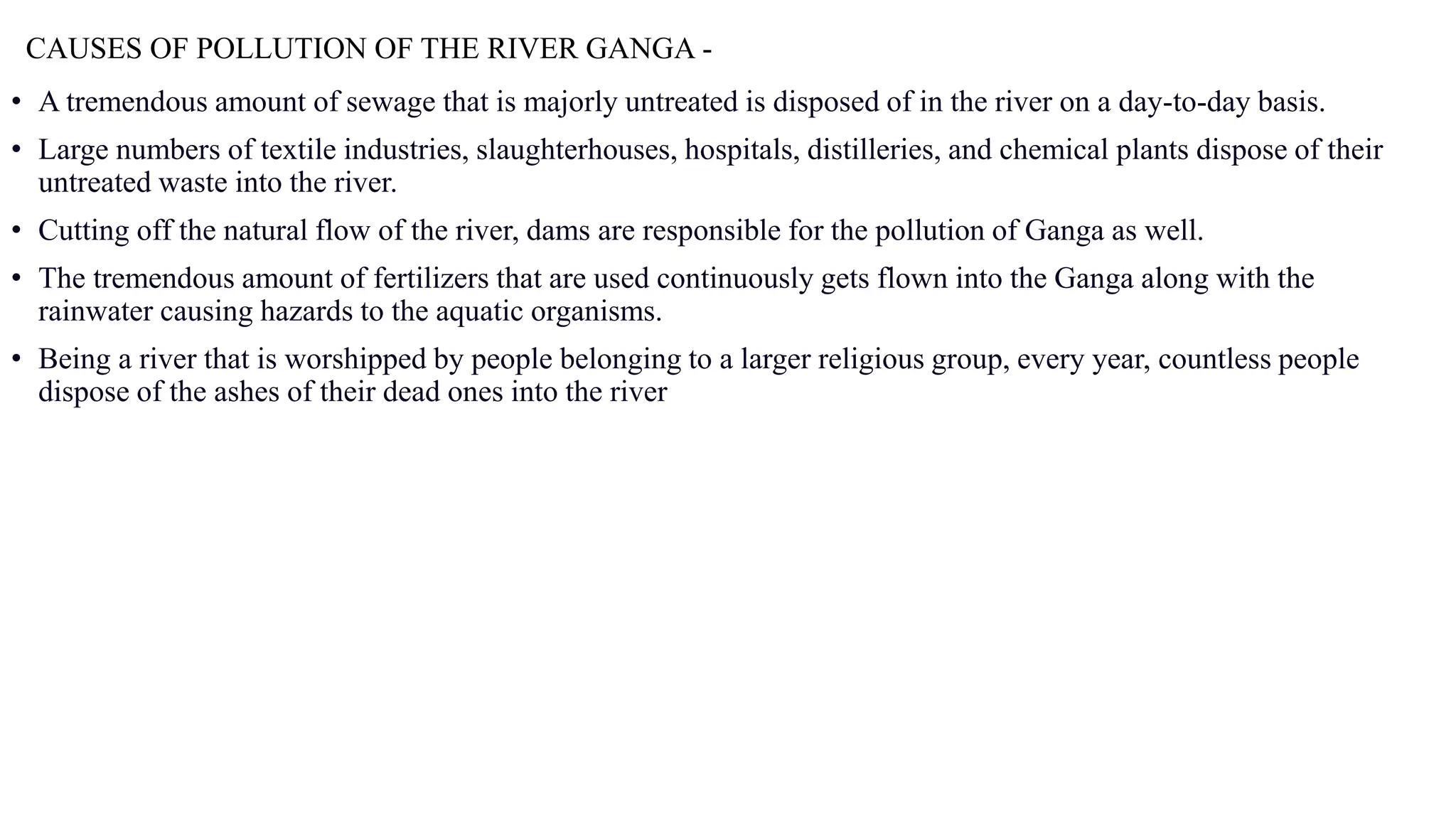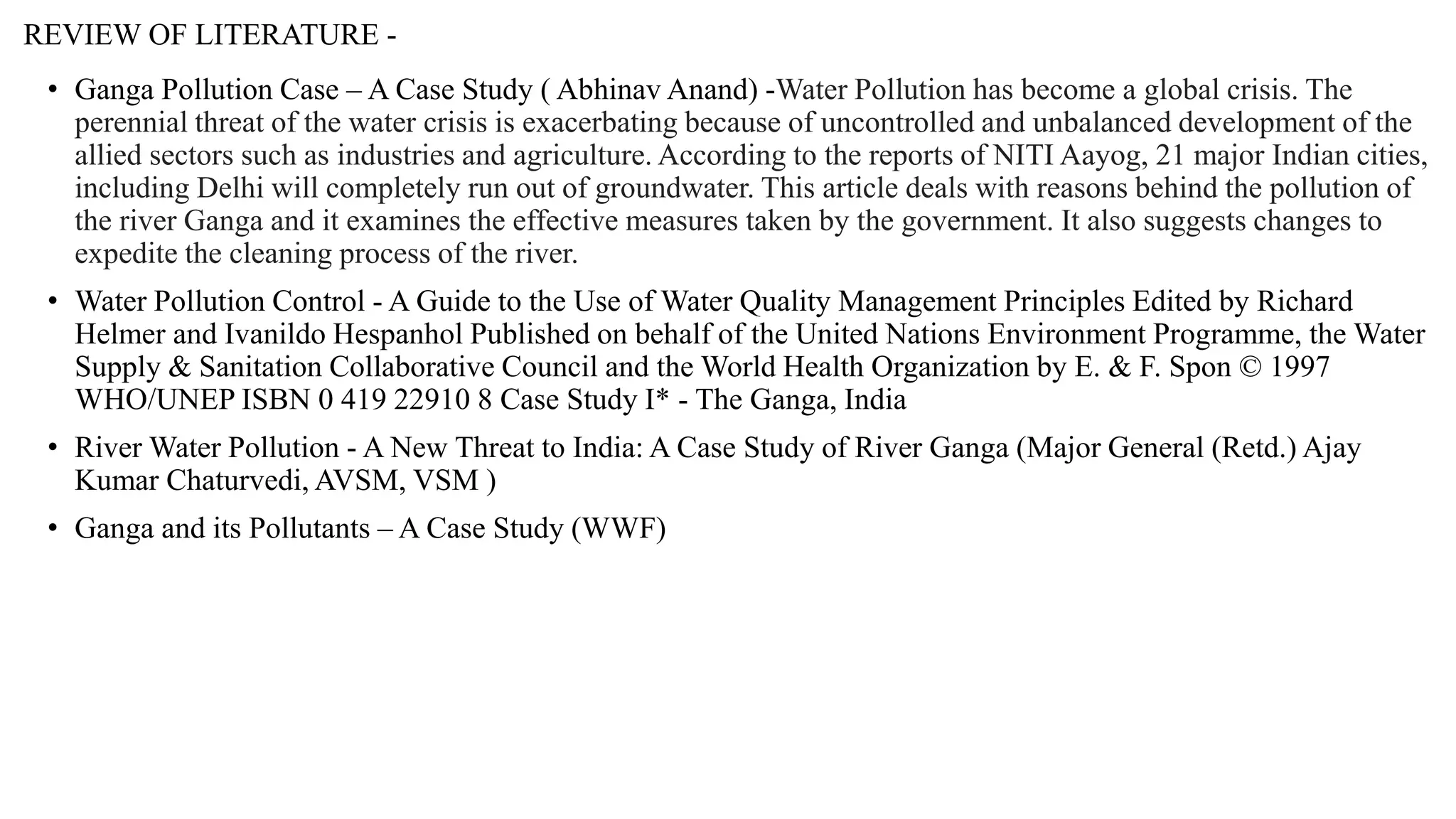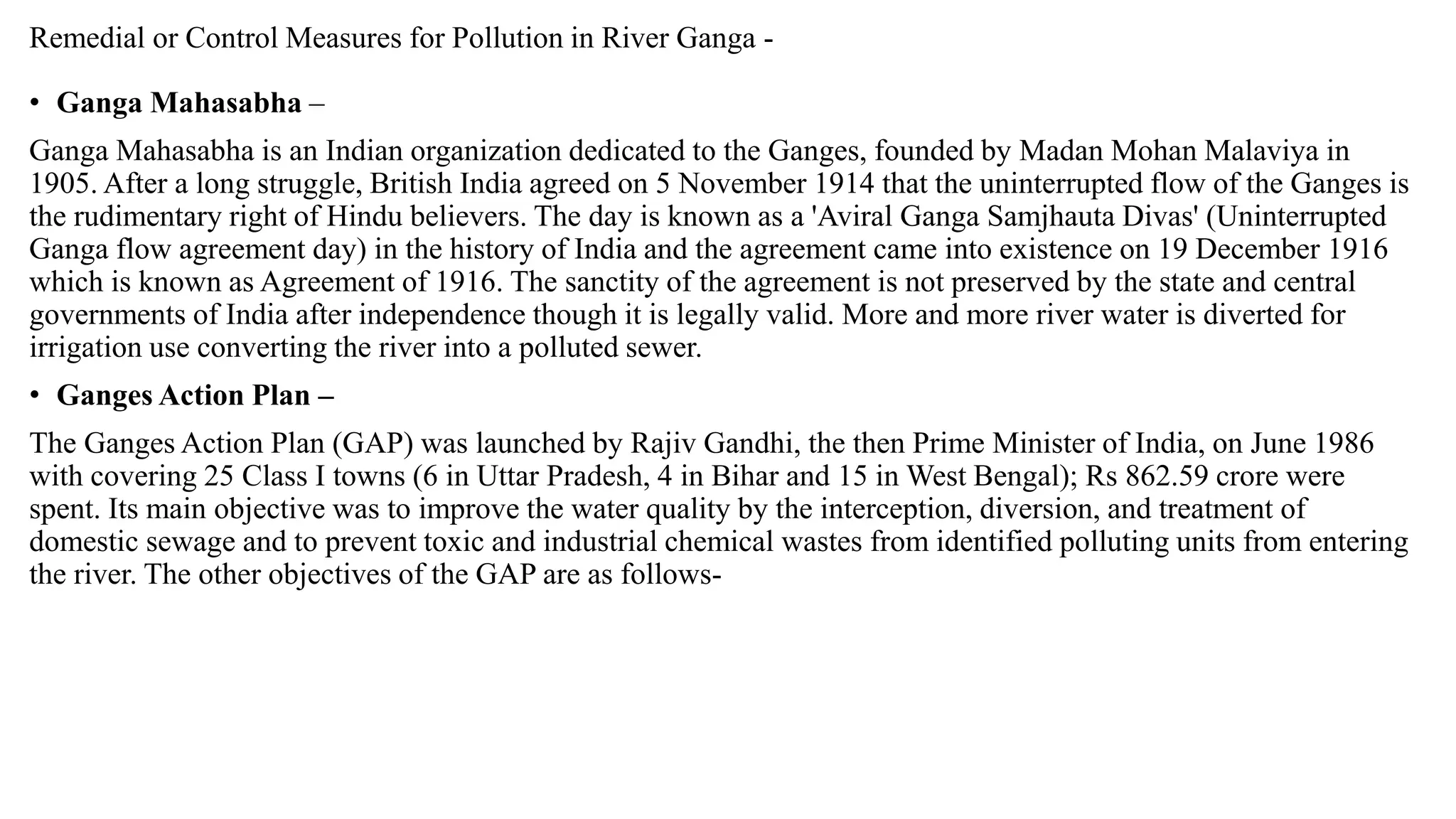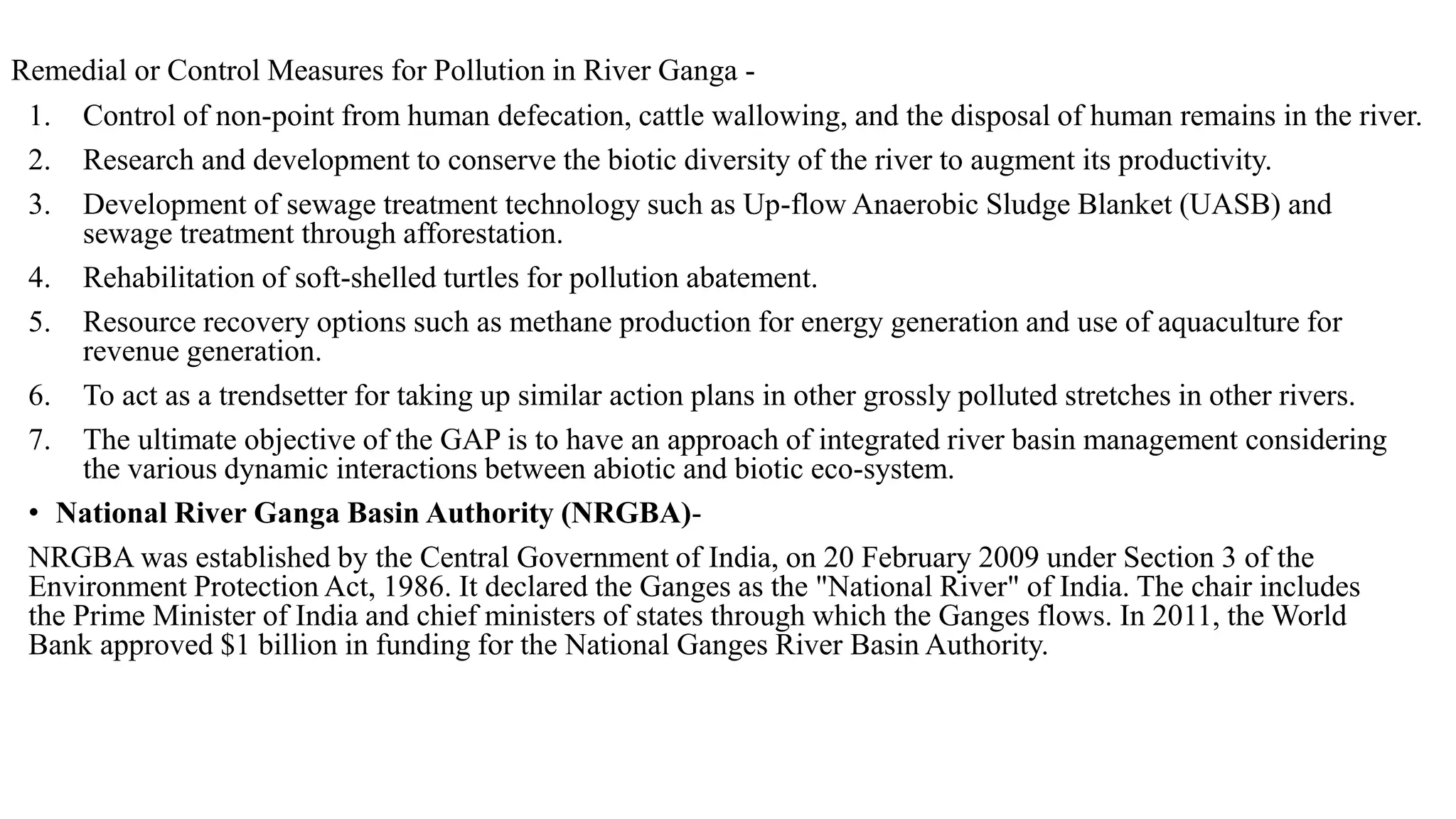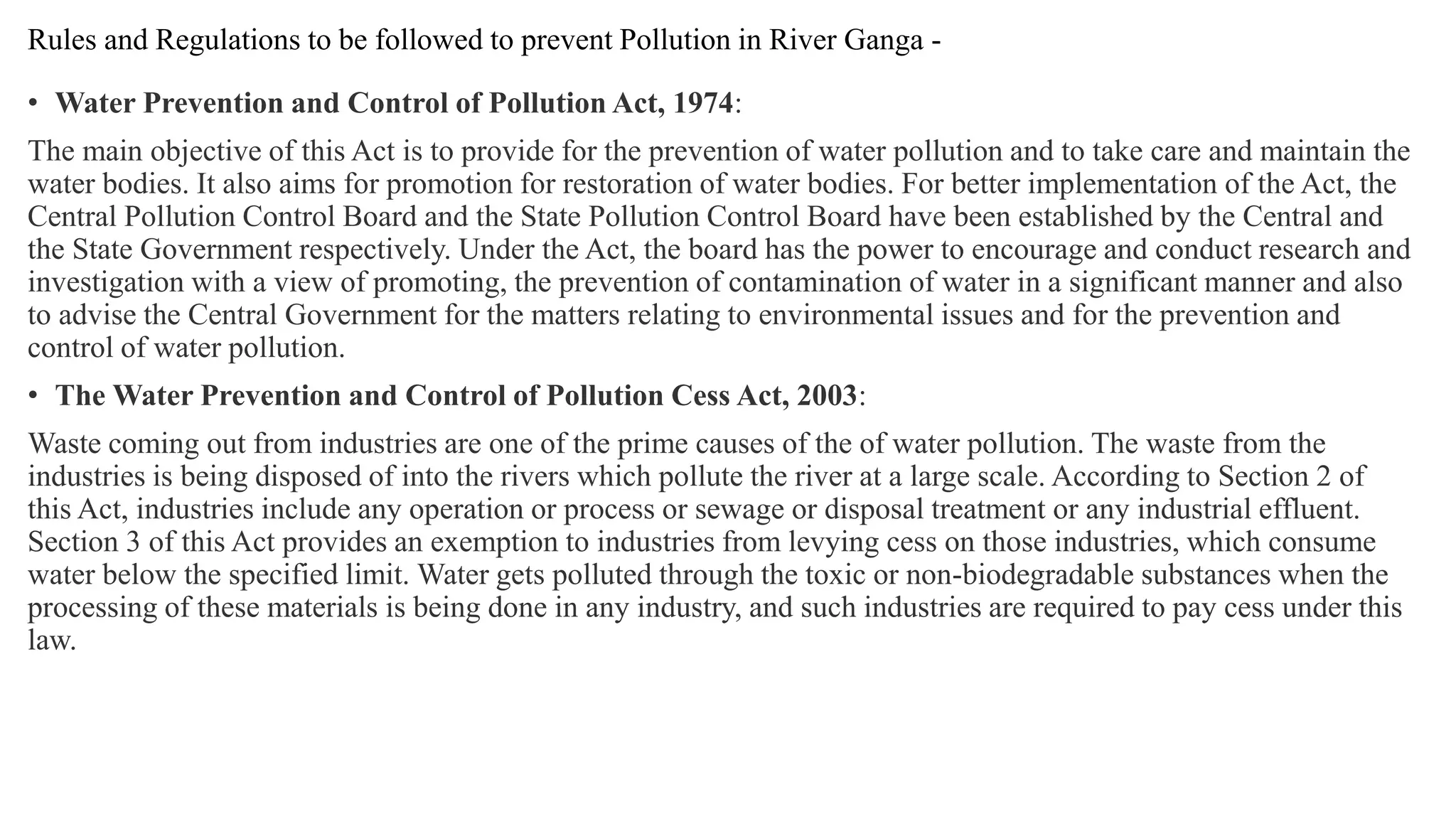The Ganga River, crucial for 40% of India's population, faces severe pollution from untreated sewage and industrial waste, becoming the fifth-most polluted river globally. Despite various government initiatives, including the Namami Gange project launched in 2014, pollution levels remain critical, raising health concerns due to water-borne diseases. The document discusses the causes of pollution and explores remedial measures while highlighting the legislative framework aimed at protecting the river's health.

![INTRODUCTION -
Pollution of the Ganga , the largest river in India, poses significant threats to human health and the
larger environment. Severely polluted with human waste and industrial contaminants, the river
provides water to about 40% of India's population across 11 states, serving an estimated population of
500 million people, which is more than any other river in the world.
Today, the Ganges is considered to be the fifth-most polluted river in the world. Raghubir Singh, an
Indian photographer, has noted that no one in India spoke of the Ganges as being polluted until the late
1970s. However, pollution has been an old and continuous process in the river by the time people were
finally acknowledging its pollution. Stretches of over 600 km (370 mi) were essentially
ecologically dead zones.
A number of initiatives have been undertaken to clean the river, but failed to deliver desired
results. After getting elected, India's Prime Minister Narendra Modi affirmed to work on cleaning the
river and controlling pollution. Subsequently, the Namami Gange project was announced by the
government in the June 2014 budget.[11] An estimated Rs 2,958 Crores (US$460 million) have been
spent until July 2016 in various efforts to clean up the river](https://image.slidesharecdn.com/pollutioninriverganga-acasestudy-16blb1009-210810041941/75/Pollution-in-River-Ganga-2-2048.jpg)


